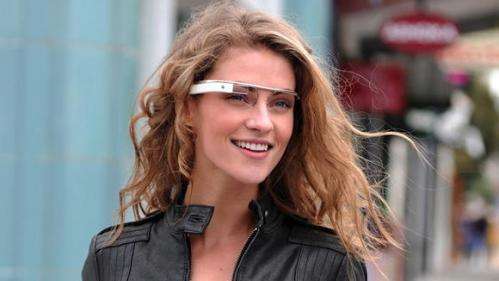March 24, 2013 report
Google patent suggests Google-Glass-ish control of appliances

(Phys.org)—Perceptions, design concepts, and expectations of Google Glass roll on, with yet another patent filing by Google. This time the call is for a Google Glass-like wearable computer to be the ultimate solution for remote controls. So far, the popular image of a Google Glass wearer is the enlightened, connected person on an enlightened urban avenue, smartly maneuvering data from the eyeglass device.
Act Two. Shift the Google Glass concept to indoors, in the living room, where Google Glass is a home-body's aid, used to control everyday objects, with the user issuing voice commands to the home devices and getting information from the objects as well.
That's what a new chapter in Google Glass might be. Earlier this week, Mat Smith of Engadget discovered the patent, Wearable Computer with Superimposed Controls and Instructions for External Device.
The patent was originally filed in September 2011 and recently published by the U.S. Patent and Trademark Office. "During our patent application trawling this week, we fished up another possible application for Google's future-wear," wrote Smith.
The patent application called for a device for controlling home objects such as refrigerators, TVs, garage doors, and office machines.
One scenario would be for the wearable computer to relay instructions to open or close your garage door. Or, If the home printer were to be out of paper, the glasses would show an alert on the eyepiece and would tell you about adding paper in the correct tray.
Heads-up displays could show up on the glasses or on other objects, using built-in lasers. "When the wearable computing device determines that a target device is within its environment," according to the patent, "the wearable computing device obtains target device information related to the target device. The target device information may include information that defines a virtual control interface for controlling the target device and an identification of a defined area of the target device on which the virtual control image is to be provided."
The HMD, as suggested, may include an optical system mounted to a head- support. The optical system may include a light source, such as a light-emitting diode (LED) configured to illuminate something like a liquid crystal-on-silicon (LCOS) display panel. Also, the HMD may include a camera configured to capture images similar to the wearer's field of view.
The patent also described some technologies that could come into play such as RFID. "As another example, the wearable computing device may detect a beacon or other signal transmitted by the target device. The beacon or other signal could be, for example, a radio frequency signal, e.g., using WiFi, Bluetooth, or near field communication (NFC), an optical signal, such as an optical signal emitted by a visible or infrared LED on the target device, or an acoustic signal, such as an ultrasonic signal. In other examples, the wearable computing device may detect a radio frequency identification (RFID) tag on the target device or recognize an optical identification, such as a barcode or quick response (QR) code on the target device."
© 2013 Phys.org





















